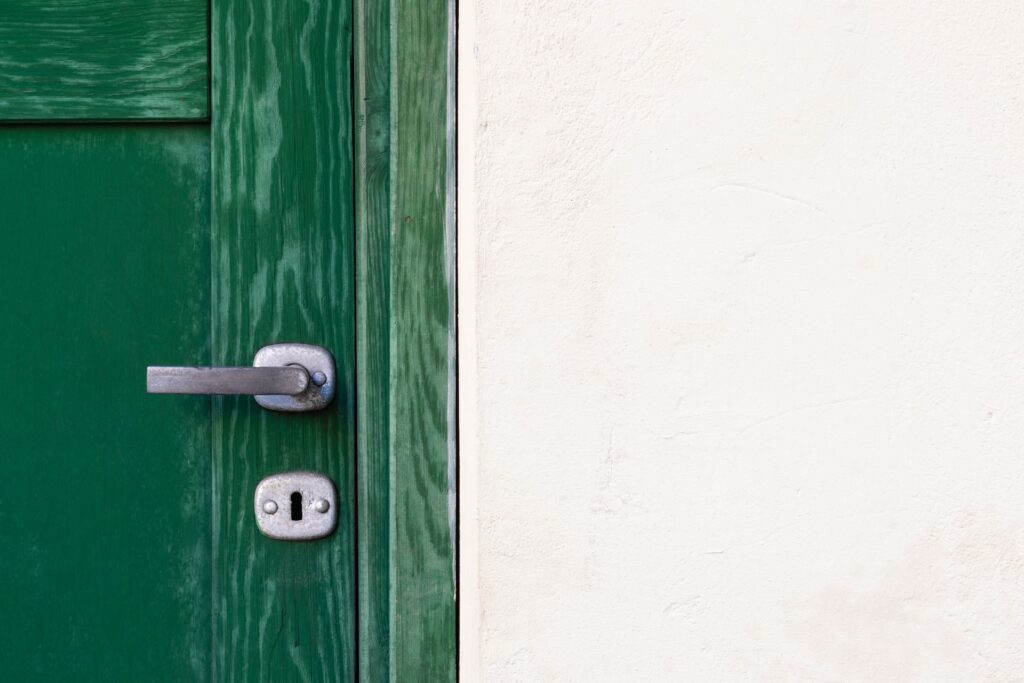
There is nothing quite as bad as coming in from the cold and still feeling chilly. While it might be tempting to simply crank up the heat on your thermostat, there are other ways to stay warm this winter without worrying about how much oil or gas you’re using. Read on for our list of eight of the best ways to stay warm this winter. You will find everything from common sense advice to more in-depth fixes that will take a little more work but will be worth it in the long run.
1. Keep doors closed

We’ll start small with some traditional dad advice. Keep your doors closed! The heat will travel throughout your home quicker than a bad smell if you leave doors open all over the place. Be mindful of closing doors behind you, and you will notice that rooms heat up much quicker and stay warm for longer too, even after the heating is turned off. Heat retention is your best friend at this time of year.
2. Mystery drafts
Small gusts and drafts can suck heat in subtle ways (or make you think you’ve been visited from beyond the grave). A common culprit of these ghostly breezes can be doorframes and even keyholes. Sort them out with draught excluders that sit along the bottom of the door and think about adding draught tape to the sides.
The keyholes from deadbolt locks tend to be the worst for letting in draughts. Sort them out quickly and cheaply by simply placing a circle of felt over them. A dab of glue or a sport of tape will be enough to keep it stuck on but allow you to flip it up when you need to insert a key. They’re also great if you have whistling doors that make noise when the wind blows through.
3. Dehumidifiers
Cold and dampness go hand in hand, with dampness making things seem that much colder. A dehumidifier works by pulling moisture out of the air and either collecting it in a container or pumping it straight out of your home or down the drain via a pipe. Dehumidifiers come in all shapes and sizes, but even a small one will make a big difference to your home.
This could be a good choice if your carpets and curtains always feel a tiny bit damp or if you live in a building that has predominantly stone walls. Another excellent benefit of a dehumidifier is that it will dry your clothes quickly too, and remember, never pop clothes over radiators to dry off.
4. Wear layers
Find yourself reaching for the thermostat while working from home? Add some layers instead. Now, if you find yourself needing outdoor jackets on while sitting in your living room there are more significant problems afoot. However, if you are the type of person who only wears short sleeves and walks about barefoot once you get home, you are sacrificing serious energy in a bid to stay warm. A pair of socks and a long-sleeved cardigan could be more than enough to sort you out.
5. Thermostatic controls
Speaking of thermostats have you considered thermostatic controls before? A common problem people have is they need to turn the heating in the whole house up to get the room they are into a comfortable temperature. This wastes a lot of money if you are not using other rooms very much. Thermostatic heaters mean you can program each individual radiator to get to a set temperature. For little-used spaces, you can keep the temperature on the cooler side.
For the most used rooms (or particularly cold ones) crank up the heat, and only the radiators you choose will start working away. The good news is you can fit thermostatic controls to most existing radiators. It is a quick fix but one that could quickly improve your energy usage.
6. Electric radiators
Sticking with the radiator front, if you are in need of a serious heat boost an electric radiator could be the answer. Most people think of electric heaters as benign energy-guzzling devices that don’t give a lot of bang for their buck. They are either small and pointless or cumbersome and ugly. Boy, have times changed. The electric radiator has had quite the makeover in the last few years. Take a look at the selection here to see just how good they can look at traderadiators.com.
These beacons of heat don’t need any plumbing; all they need is a socket to be plugged into. You can hang them almost anywhere given you complete freedom to add some extra oomph to rooms. Simply turn them on, set the temperature, and you will be nice and toasty in no time.
7. Insulation
If you are looking for serious and long term savings and heat conservation, you will want to investigate insulation options. Typically houses lose most of their heat through the roof. If you have an attic, it is a good idea to head up there and find out what kind of insulation you have. Loose-fill insulation is an excellent option to top up whatever is already in there. It works best on the floor of the attic in between the ceiling joints, where it can get into any nooks and crannies where the existing material has thinned or even worn down. If you have a roomier attic, then batts will work well to keep heat escaping from the roof joists. Batts come in rolls and are available in different thicknesses. You can also layer it on to trap even more heat.
8. Your windows
We will finish up by rounding back onto those pesky drafts again. Poorly fitted windows can be considered the sieves of the house. Draught excluding tape can be an option but may mean you won’t be able to actually open your windows till the summer comes around again. Ideally, you would be looking to replace any single-pane windows with double or even triple-glazed versions to keep in the most heat. If that is not possible, then thick or thermal curtains could be a solution for night-time warmth.
So there you have it. Everything from simple fixes to ones that you might want to call in the professionals for. Try out some of these tips, and your home will be feeling warmer in no time.







